What are the best wheels for a mountain bicycle? 26″, 27.5″, or 29″? This post gives a comparison (overview) of the differences, advantages and disadvantages of each of the standards.
If you have any questions (or additions and corrections), please use the BikeGremlin forum:
www.bikegremlin.net
Table Of Contents (T.O.C.):
1. Standards in numbers
Detailed explanation of wheel sizes can be found in this post: Tyre dimensions.
- 26″ is a marketing term for a wheel of a 559 mm diameter.
- 27.5″ for a wheel sized 584 mm. Also known as 650B.
- 29″ is a standard road wheel sized 622 mm. Known as 700 C.
Differences in diameters, in cm, between standards are the following:
26″ [2.5 cm] 27.5″ [3.8 cm] 29″. So a substantial difference is between the smallest 26″ and the largest 29″ – whole 6.3 cm, while 27.5″ is just slightly larger than the smallest 26″.
2. Large VS Small wheel
Advantages:
- Easier and faster rolling over obstacles (bumps and holes)
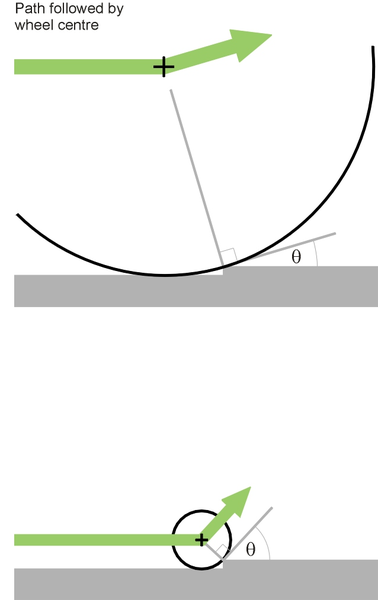
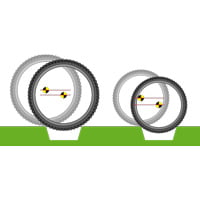
- Greater tyre volume (for the same width), which enables keeping lower tyre pressure and increases both comfort and grip.
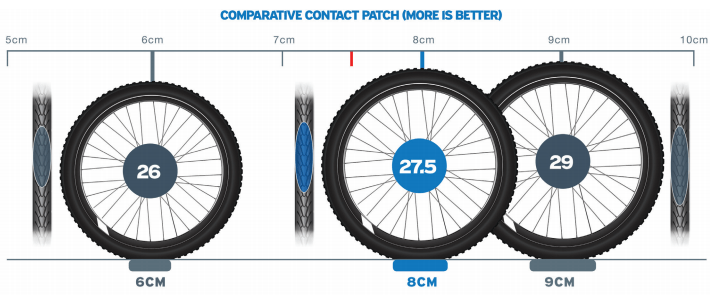
- Less work for shock absorbers, so they can be with shorter travel and set harder, because larger wheels soak up bumps better, because of the two above noted advantages.
Disadvantages:
- Harder to control and steer over technically demanding terrain that requires quick steering and direction changes.
- Heavier.
- Slower acceleration, especially “of the line”.
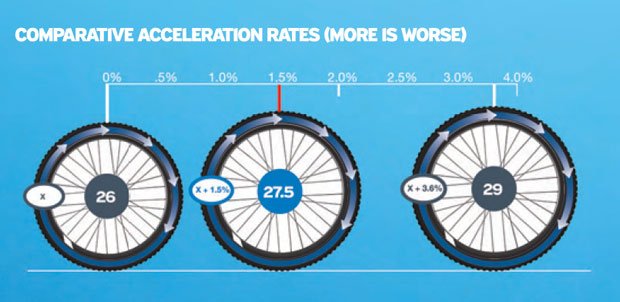
- They require a bigger frame – can be awkward for smaller riders. On smaller frames, it is hard to avoid toe overlap.
- Since hubs are the same width, a larger wheel will have spokes closer to parallel angle, making a weaker construction. Similarly constructed larger wheel will be weaker than its smaller counterpart.
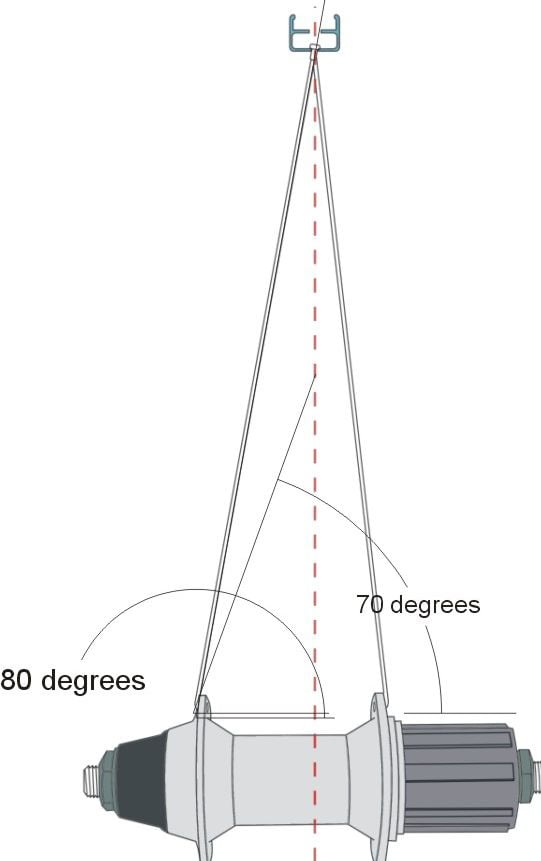
Depending on use, advantages and disadvantages will be more or less important. 29″ is the biggest, 26″ the smallest, while 27.5″ is somewhere in between the two.
3. Short history
In over century of cycling history, 622 mm diameter wheel has proven to be the optimal solution: not too large to make handling difficult, or be too heavy, nor too small to make ride over bumps uncomfortable.
The only problem was aggressive off road riding. Extremely bumpy paths, jumps over holes and bumps required extremely strong wheels. Riding up muddy hills required extremely low gearing, so that steep hills can be ridden while seated – to put more weight on the rear wheel in order to improve traction. The solution was a 559 mm (26″) wheel!
Mountain bikes made a boom in 1980s, taking the whole world by a storm. The 26″ wheel became a MTB standard. Strong wheel that made the same gearing slower than a 28″ wheel, because of the smaller diameter. And everyone was happy.
Then, in the 21st century, bicycle shock absorbers started becoming popular. Also, double wall aluminium rims became the norm. It all allowed a wheel to take less shock on bumps. So around 2010 more big companies started making frames and wheels for 622 mm rims that were wide enough to take fat MTB tyres. The “new” wheel was marketed as 29″ (29er) to differ from standard 622 mm road wheel.
Since large wheel has it’s disadvantage, several years later companies started producing a 584 mm MTB wheel – popular 27.5″. Newest craze as of year 2013. So that now we have three standard MTB wheel sizes.
Finally: popularity of disc brakes has made wheel swapping easier, so any wheel that can fit a big wheel can just swap and put a smaller wheel in a second (larger wheels don’t fit into frames built for smaller wheels so the reverse is not possible).
4. Which one is the best?
Which car is the best? Ferrari?
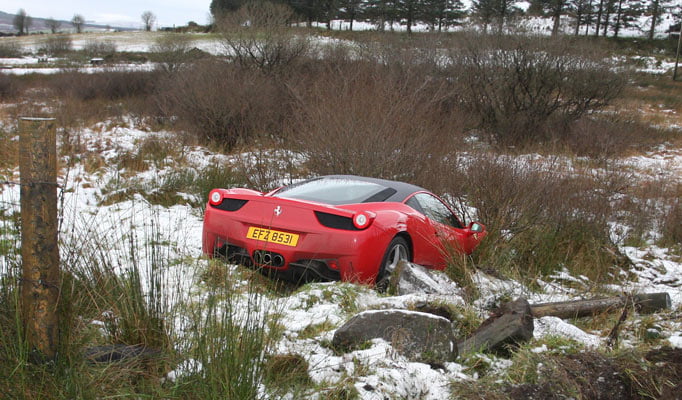
Of course, the best choice depends on the use. Each size has it’s good and bad sides.
26″ is the best for
- terrain that requires a lot of changes of direction and avoidance of obstacles
- smaller riders that need smaller frames
- quick off the line acceleration
- downhill (DH) and freeride (FR) riding
- 26″ wheeled bikes are of the smallest total size. Practical if carrying bike in a small elevator, up tight staircases, or storing inside smaller spaces.
29″ is the best for:
- fast off road cross terrain riding – 29″ is the “mountain road bike” 🙂
- large riders that need a larger frame as well
- longer rides (because of better efficiency)
- some bumps that are more easily avoided with 26″ are easily ridden over with 29″ 🙂
- maximal possible comfort – if that is an imperative
27.5″
- smaller riders that can’t fit 29″ bike, but still want a bigger wheel
- On all other accounts it is between 26″ and 29″ – all the good and bad points. Faster and more comfortable than 26″ wheels, but heavier and slower steering. Then again – slower and less comfortable than 29″ wheels… but lighter and quicker steering.
- The main flaw is that standard is rather new, so less wheel and tyre choices.
Last updated:
Originally published:
Related post – Bicycle wheels – how many spokes:

